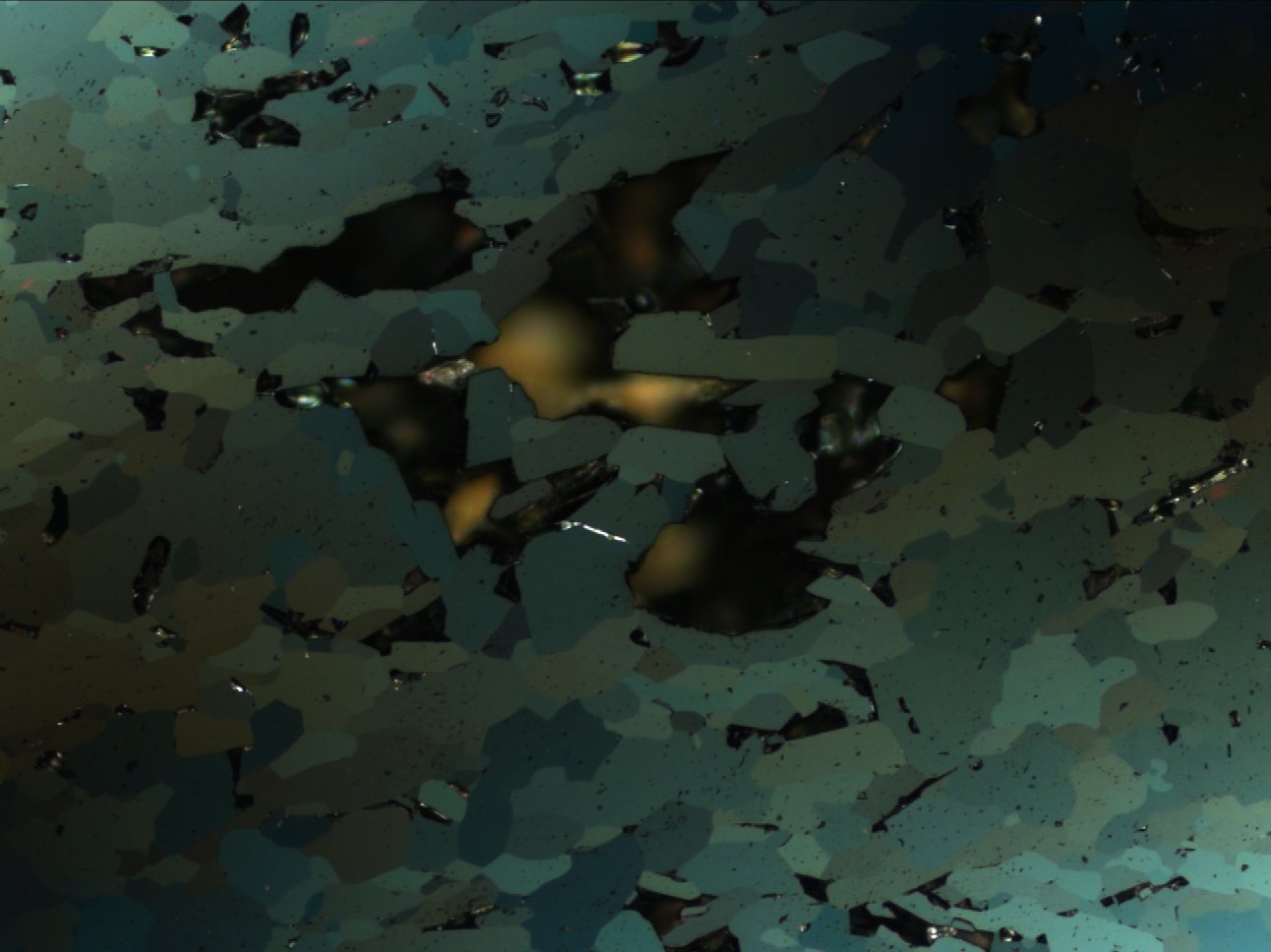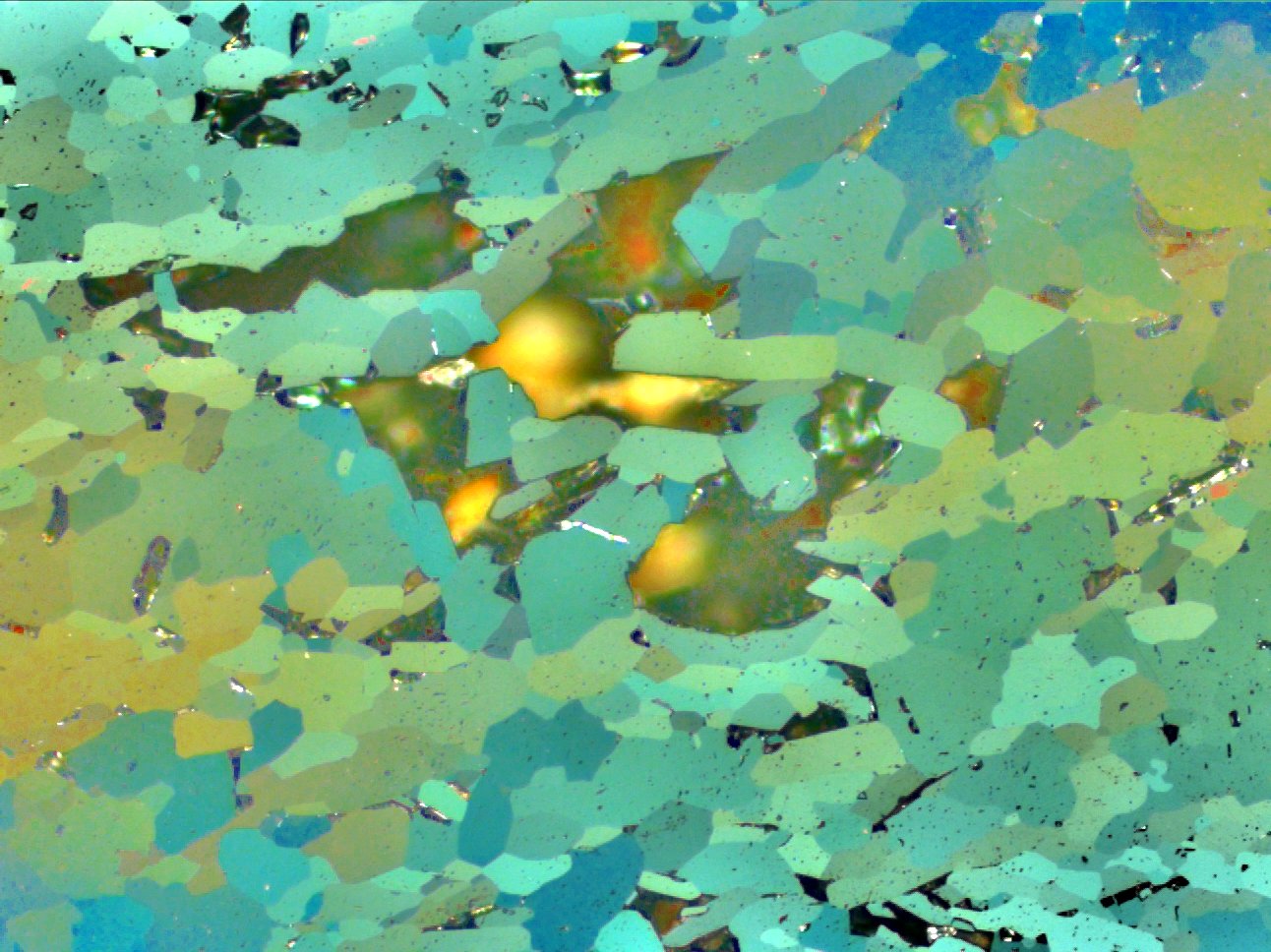Automatic Classification of Hematites in Iron Ore
 |
 |
 |
 |
 |
 |
 |
 |
 |
 |
Automatic Classification of Hematites in Iron Ore

1 - Image in Campo Claro
The image captured in the bright field is used to segment hematite from other types of ore, such as magnetite and goethite, and from other phases such as quartz and resin.
Automatic Classification of Hematites in Iron Ore

2 - Polarized Image (CPOL)
The polarized image is used to discriminate porous hematites from compact hematites; and monocrystalline hematites from polycrystalline hematites (both belonging to the class of compact hematites).
Automatic Classification of Hematites in Iron Ore

3 - Segmentation of Hematites
Segmentation by a defined threshold (in this case, 191), to generate a binary image containing only hematite.
Automatic Classification of Hematites in Iron Ore

4 - Binary image containing all hematites, originating from the segmentation of the image in a bright field, by means of gray thresholds.
Automatic Classification of Hematites in Iron Ore

5 - Intersection between the binary image of the hematites and the polarized image, to continue in the automatic classification process.
Automatic Classification of Hematites in Iron Ore
1The Classification:
All hematites: Compact x Porous

6 - Image of porous hematites, resulting from an automatic classification by pattern recognition using the polarized image, through a previously trained system.
Automatic Classification of Hematites in Iron Ore
1The Classification:
All hematites: Compact x Porous

7 - Image of compact hematites, resulting from an automatic classification by pattern recognition using the polarized image, through a previously trained system.
Automatic Classification of Hematites in Iron Ore
2The Classification:
Compact hematites: Monocrystalline x Polycrystalline

8 - Image of monocrystalline hematites, resulting from an automatic classification by pattern recognition using the polarized image, through a previously trained system.
Automatic Classification of Hematites in Iron Ore
2The Classification:
Compact hematites: Monocrystalline x Polycrystalline

9 - Images of polycrystalline hematites, resulting from an automatic classification by pattern recognition using the polarized image, through a previously trained system.
Automatic Classification of Hematites in Iron Ore
3The Classification:
Compact hematites: Granular x Lamellar x Lobular

10 - Granular, lamellar and lobular hematites, resulting from an automatic classification, based on the binary image, by thresholding various attributes of size and shape.
 |
 |
 |
 |
 |
 |
 |
 |
Color Image Illumination Correction

1 - Image of iron ore (pellet feed) obtained under optical microscopy in circular polarization mode. This mode has strong lighting irregularities.
Color Image Illumination Correction

2 - Decomposition of the original image into the components of the HSB color system (Hue).
Color Image Illumination Correction

3 - Decomposition of the original image into the components of the HSB color system (Saturation).
Color Image Illumination Correction

4 - Decomposition of the original image into the components of the HSB color system (Shine).
Color Image Illumination Correction

5 - Application of the low-pass filter in the Brightness channel to obtain the background containing the lighting variation.
Color Image Illumination Correction

6 - Image of the Brightness channel with corrected lighting, obtained by subtracting the image from the Brightness channel and that of the corrected Brightness channel.
Color Image Illumination Correction

7 - Image after lighting correction using the HSB color space, obtained by composing the 3 channels again, now with the corrected Brightness channel.
Color Image Illumination Correction

8 - Image after lighting correction using the HSB color space with contrast expansion.








